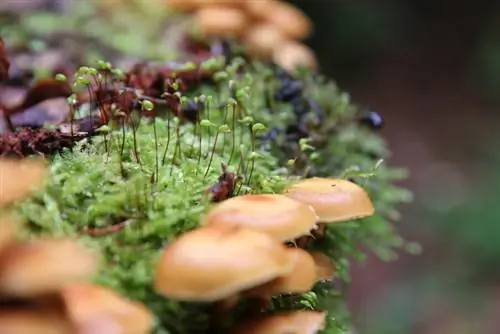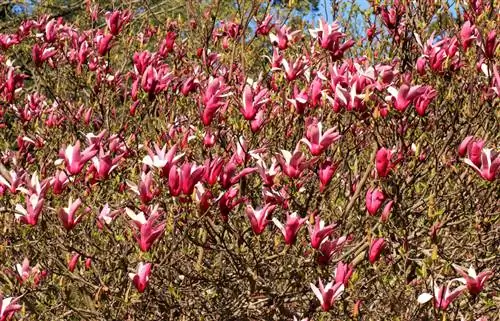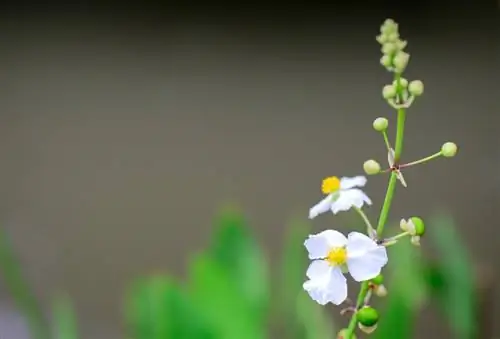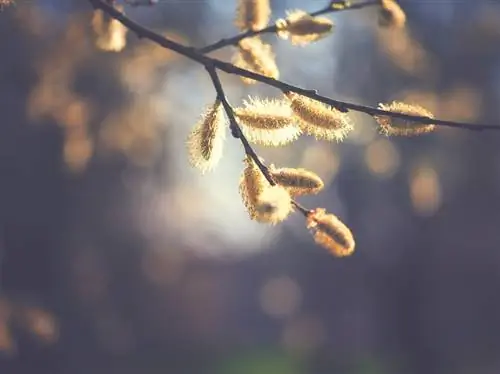- Author admin [email protected].
- Public 2023-12-16 16:46.
- Last modified 2025-01-23 11:20.
In many gardens, moss is viewed as a weed and is rigorously combated. Reducing the tiny, green land plant to this status does not do justice to its importance. This profile with more detailed explanations would like to show which attributes distinguish moss.
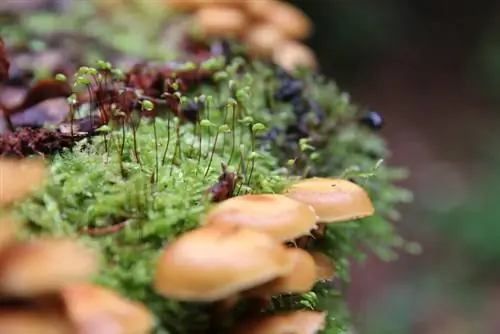
What distinguishes moss in the profile?
Moss is a rootless spore plant with about 15,000 to 20,000 species. They have been established as land plants for 400 million years and prefer shady, humid locations. Moss fulfills important ecological functions, such as pollutant filtering, nesting material and as a food source for small animals.
Systematics and appearance in brief
For almost 400 million years, moss has known how to assert itself in nature against all the vicissitudes of plant life. Only a few plants can look back on such a long evolution. The following profile attempts to summarize the outstanding attributes of moss species:
- Moss Definition: Green, rootless spore plant
- Origin from the green algae (Chlorophyta)
- Main clans: broadleaf mosses (Bryophyta), liverworts (Marchantiophyta), hornworts (Anthocerotophyta)
- Number of known species: 15,000 to 20,000
- Cosmopolitan land plants for 400 to 450 million years
- Growth with shoot and leaflets or thallus as a multicellular vegetation body
- Rare reproduction in alternation of generations via spores and not seeds
- Growth heights from 1 mm to 20 cm, rarely higher
- Main areas of distribution: Shady, humid locations with lean, acidic, compacted soil
Fascinating features
Systematics and appearance give little idea of what abilities moss has developed in the course of its evolution. These potentials rest in the inconspicuous plant:
- Problem solver: Greens up locations where nothing else would grow
- Indicator plant: indicates site conditions and saves time-consuming soil analysis
- Natural insecticide and fungicide: liverwort extract repels voracious snails and is effective against fungal infections
- Cultivation aid: Sphagnum moss provides valuable assistance in orchid care
- Pollutant filter: Sphagnum moss filters billions of tons of pollutants from the air worldwide
- Survivalist: Survive extreme drought and cold to return years later
Moreover, moss is an indispensable component in the ecosystem. The plant offers microorganisms and beneficial insects a safe place to retreat. Birds find nesting material and insects find nutritious food here. As a pioneer plant, moss settles in the most inhospitable places and carries out photosynthesis diligently even in the shade.
Tip
You think the survivalist moss loses out in deserts? In the scientific magazine 'Nature Plant', researchers reported on the moss species Syntrichia caninervis in 2016. This has developed an ingenious strategy to exist in a bone-dry desert. At the ends of its leaves there are extremely delicate hairs with which the moss can extract micro-fine droplets of water from the air.

